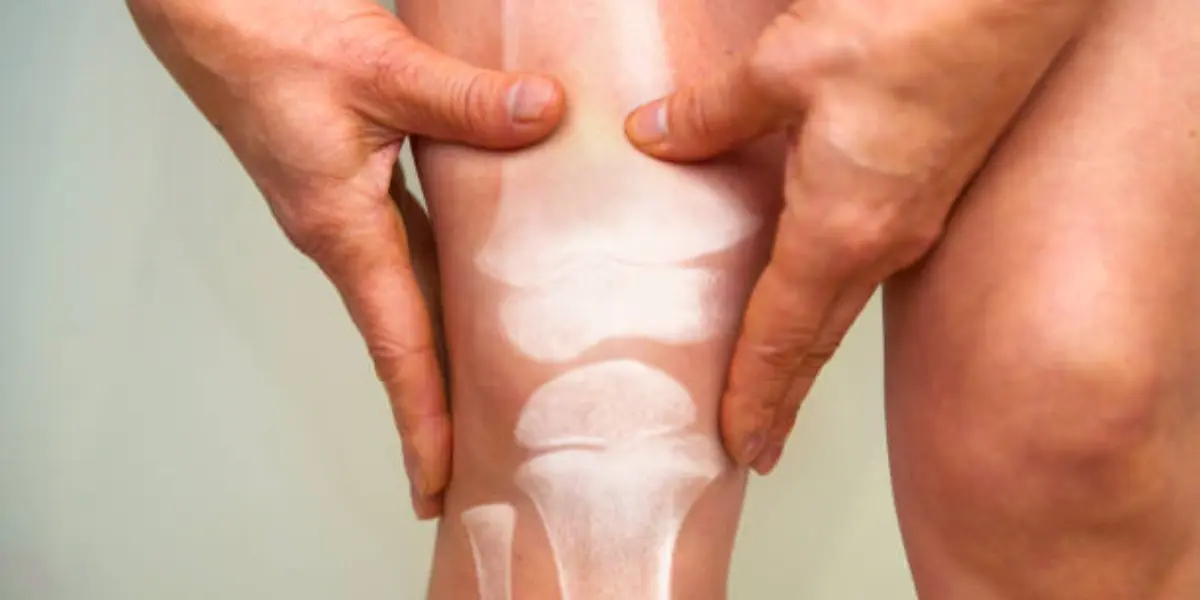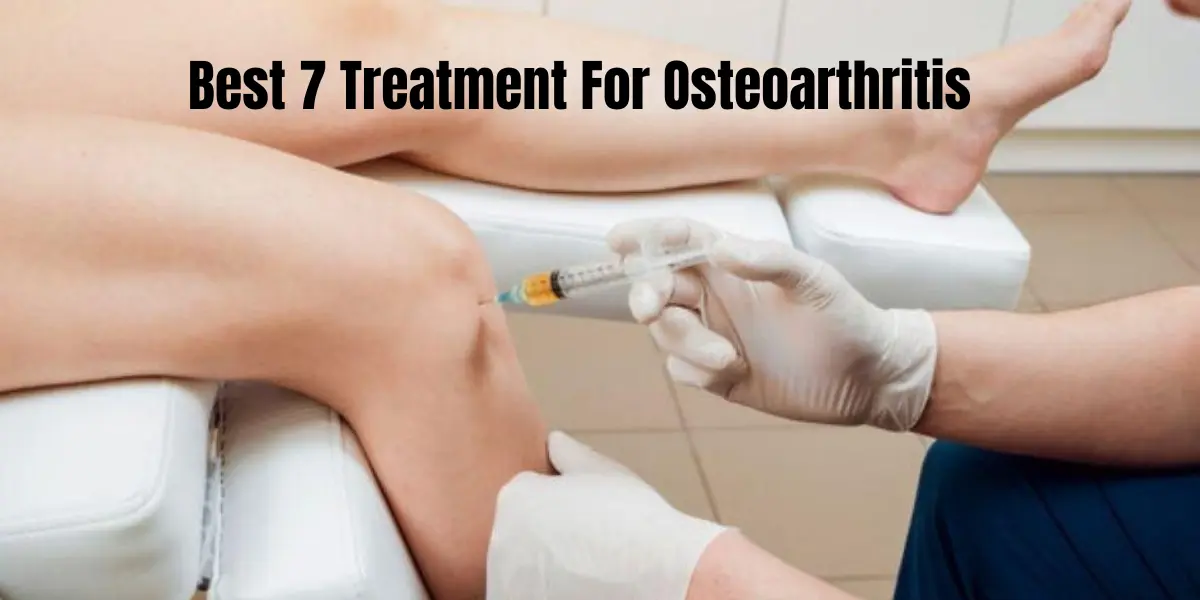Do you feel stiffness and pain in your joints? Or do you need help moving around too much? You should get yourself checked for Osteoarthritis. Although it is a part of the arthritis condition, it is different from other kinds as it is non-inflammatory. It is common in senior adults and children with a genetic disorder.
In this blog, we are going to take a closer look into Osteoarthritis, its causes, symptoms, diagnosis, and treatment. We will also explore the different approaches that can help avoid developing this condition. So, if you have been dealing with excruciating joint pain, or know someone who is, then this blog is for you.
Can Osteoarthritis Improve? What Is The Best Treatment For Osteoarthritis?
Medically speaking, Osteoarthritis is a degenerative disease that affects the weight-bearing joints, like the spine, hips, knees, or big toes. Individuals suffering from this disease will experience the breakdown of cartilage in their bones, which restricts the motion and hurts when they are trying to move.

With the cartilage not functioning properly, over time, patients may also lose the operation of ligaments and tendons surrounding the affected joint. This is a common type of arthritis that one can come across, and it is safe to say that more than half of the world’s population suffers from Osteoarthritis.
There is no prevention for this disease, but there are treatments available to manage the symptoms. Once you can understand how this disease works and how we can manage it, Osteoarthritis can be bearable.
How Does Osteoarthritis Make You Feel? Symptoms Of Osteoarthritis
Although old age is one of the common factors there are several symptoms of Osteoarthritis.
- Difficulty in the movement of joints
- Experiencing pain after a long period of inactivity in the joints
- Swelling of joints
- Boney enlargements of the joints
- Stiffness in joints a long period of activity in joints
- Imbalanced posture in the joints
- Crackling sound when you move your knees
- Weakness in the muscles around joints
- Cannot stretch the joints
- Tenderness around the affected joint
What Are The Main Causes Of Osteoarthritis?
Several factors can contribute to an individual developing the symptoms of Osteoarthritis.
- If your job requires you to overuse your joints and muscles for a long period daily
- If you are over the age of 50
- If you have experienced prior injury to the joint in the form of a fracture or torn ligament
- If you are obese
- If there is malalignment of bone or joint structures
- If your muscles are too weak to support the joints
- If your bone density is low
- If you have borderline diabetes
- If your family has a history of Osteoarthritis
Diagnosis, Treatment, And Steps To Take For Osteoarthritis
The diagnosis of Osteoarthritis depends on the severity of the pain that you are dealing with and the location of the pain. Your doctor may need to do a physical test and X-rays of the affected joint to diagnose the disease.
The bones and muscles will need to be looked at closely, to see if there is inflammation or not. This inflammation differs from the symptoms of Osteoarthritis in other kinds of arthritis conditions.
An MRI scan can help the doctor to examine the joint and surrounding tissues along with blood tests to confirm the diagnosis. In some cases, individuals have accumulated fluid in their joints which can hinder the purpose of determining the disease. To overcome this hurdle, doctors may joint aspiration to see through it.
What Is The Best 7 Treatment For Osteoarthritis?
From medications to surgeries, there are different approaches to treat Osteoarthritis. However, the main purpose of treating Osteoarthritis is to reduce the pain and stiffness in the affected joints. The result of this will benefit you in moving freely and operating on your own.

1. Non-Pharmacological Treatments
These treatments do not involve any medications or injections to treat Osteoarthritis. When the symptoms of Osteoarthritis are mild and do not require firm action, your doctor can advise you on these treatment approaches.
2. Losing Weight
Studies have found that obese people are more prone to Osteoarthritis, and can also reduce the symptoms if they lose extra weight. For this, you can try daily exercising, and bring changes to your lifestyle and diet.
3. Physical Therapy And Occupational Therapy
These therapies focus on the operational function of the bones, and joints, and strengthening your core muscles. Occupational therapy involves working on the upper extremities of your body and reducing the stiffness of the muscles. Physical therapy focuses on the gross motor skills of the muscles and better coordination with arms, legs, and other parts of the body.
4. Assistive Devices
These devices are recommended by doctors to treat your Osteoarthritis in a more comprehensive approach. Here a cane, walker, or support belt can help reduce the pain in your joints while you move. These treatments may become a part of your life, or not depending on your condition.
5. Pharmaceutical Treatments
These treatments are recommended by doctors when therapy, exercise, or support devices cannot help with your Osteoarthritis. You can easily get pain meds like acetaminophen, ibuprofen, Advil, or naproxen over the counter.
6. Steroid injections
Injections with hyaluronic acid, or platelet-rich plasma, corticosteroids, are recommended for Osteoarthritis pain and treatment. These injections need to be performed under supervision or by the doctors only.
7. Surgeries
Surgery is the last resort when medication and therapies do not work for your Osteoarthritis condition. Joint replacement surgery, arthroscopy, or joint fusion are some of the common surgeries that can help treat osteoarthritis. Artificial joints are also involved in removing the pain and stiffness in the joints.
End Result
Osteoarthritis is a condition that can affect individuals at the age of 30. You can reduce the risk of developing this condition if you exercise daily, eat a healthy diet, and lead a healthy lifestyle. If your work requires you to stand or do physical work continuously, then you need to slow down. Relax and let your muscles recover from the strain that has occurred.
Controlling your blood sugar and maintaining a healthy weight can help reduce the symptoms and reverse the effects of Osteoarthritis. So Keep stretching and steer away from joint pain.
References
- Bortoluzzi A, Furini F, Scirè CA. Osteoarthritis and its management – Epidemiology, nutritional aspects and environmental factors (https://pubmed.ncbi.nlm.nih.gov/30213694/). Autoimmun Rev. 2018 Nov;17(11):1097-1104. Accessed 10/2/2023.
- Donahue SW. Krogh’s principle for musculoskeletal physiology and pathology (https://pubmed.ncbi.nlm.nih.gov/30179205/). J Musculoskelet Neuronal Interact. 2018 Sep 1;18(3):284-291. Accessed 10/2/2023.
- Hochberg MC, Altman RD, April KT, Benkhalti M, et al.; American College of Rheumatology. American College of Rheumatology 2012 recommendations for the use of nonpharmacologic and pharmacologic therapies in osteoarthritis of the hand, hip, and knee (https://pubmed.ncbi.nlm.nih.gov/22563589/). Arthritis Care Res (Hoboken). 2012 Apr;64(4):465-74. Accessed 10/2/2023.
- National Institute of Arthritis and Musculoskeletal and Skin Diseases (U.S.). Osteoarthritis (https://www.niams.nih.gov/health-topics/osteoarthritis#tab-overviw). Accessed 10/2/2023.
- National Library of Medicine (U.S.). Osteoarthritis (https://medlineplus.gov/osteoarthritis.html). Accessed 10/2/2023.
- Sen R, Hurley JA. Osteoarthritis (https://pubmed.ncbi.nlm.nih.gov/29493951/). 2022 May 1. In: StatPearls [Internet]. Treasure Island (FL): StatPearls Publishing. Accessed 10/2/2023.